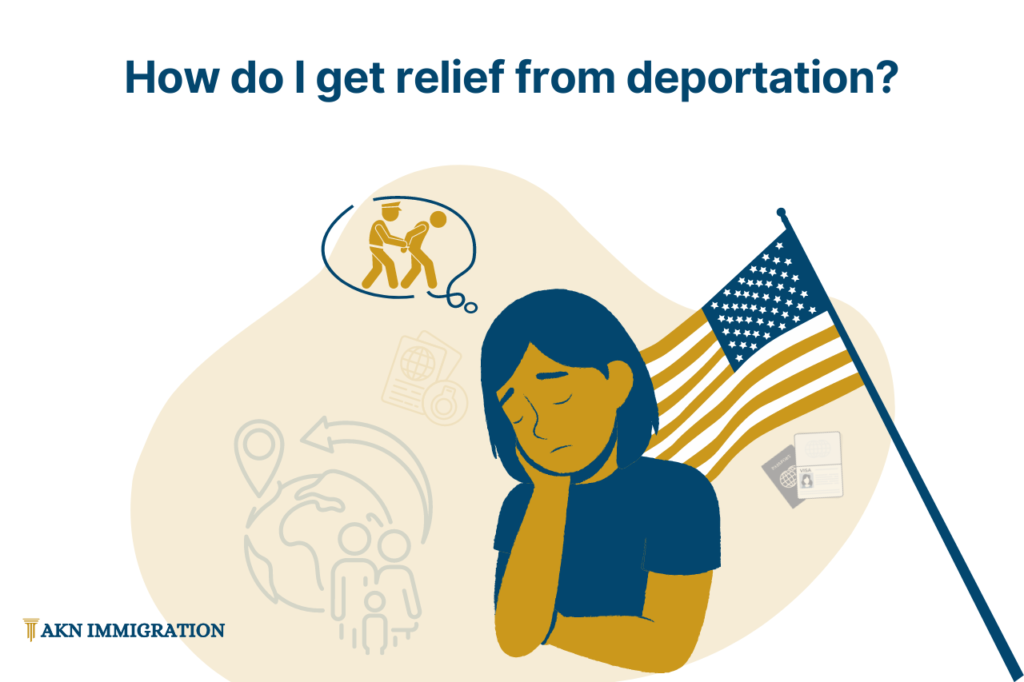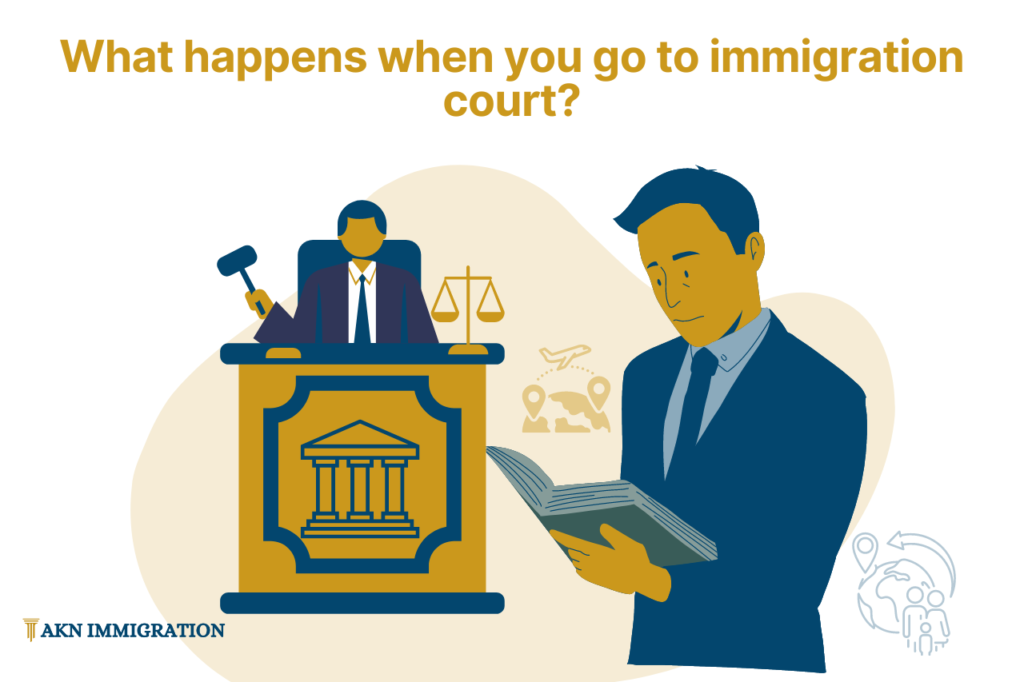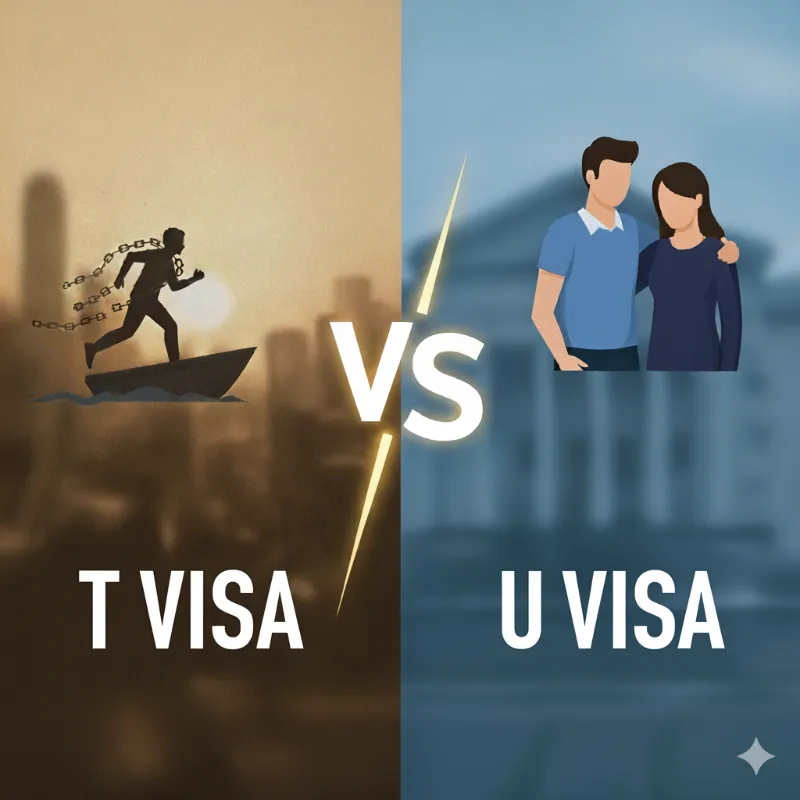In immigration court, individuals facing removal may have access to various forms of relief. These options include Asylum for those who can demonstrate past persecution or a well-founded fear of future persecution in their home country based on certain criteria. Cancellation of removal is another avenue available to permanent and non-permanent residents who meet specific residency and moral character requirements.
Voluntary departure provides individuals with the opportunity to leave the U.S. on their own terms, avoiding some of the harsh consequences of formal deportation. Adjustment of status is an option for those eligible to become lawful permanent residents while residing in the U.S., often through sponsorship by a family member or employer.
How do I get relief from deportation?

Attending all your court hearings is essential to seek relief from deportation. Missing a hearing can lead to a removal order issued in your absence. Throughout the hearings, you have the opportunity to apply for different forms of relief tailored to your individual situation. For instance, if you have concerns about persecution in your home country, you may be eligible to apply for asylum.
Alternatively, if you have been a lawful permanent resident for a considerable period and meet specific requirements, you could qualify for LPR cancellation of removal. Voluntary departure is also a possibility, allowing you to depart the country voluntarily within a specified timeframe to potentially mitigate the repercussions of a formal removal order. It is highly recommended to seek legal guidance to effectively navigate these options.
What happens if you lose your immigration case?
If you lose your immigration case, the immigration judge will issue a removal order. However, this is not necessarily the end of your options. You can appeal the decision to the Board of Immigration Appeals (BIA) within 30 days of the judge’s decision. If the BIA denies your appeal, you can further appeal to a circuit court and, in some cases, to the U.S. Supreme Court.
During the appeal process, you may be able to remain in the U.S. If all appeals are exhausted and you still face removal, you might consider other forms of relief or motions to reopen or reconsider your case if new evidence or changed circumstances arise.
What happens when you go to immigration court?

When you attend immigration court, the process begins with a hearing where you respond to the allegations in the Notice To Appear. This initial hearing is known as a Master Calendar Hearing. After the Master Calendar Hearing, your case will proceed to a Merits Hearing, where you can present evidence and arguments in support of why you should be permitted to remain in the U.S.
You have the right to have legal representation at your own expense. The Immigration Judge will make a decision based on testimony and the evidence presented. It is crucial to attend all hearings and follow court procedures and deadlines.
Can I appeal an immigration judge’s decision?
Absolutely, it is possible to challenge a decision made by an immigration judge. Generally, If you are in disagreement with the decision, you have the option to submit an appeal to the Board of Immigration Appeals (BIA). The BIA will carefully review the proceedings and determine whether the immigration judge made any errors. It is important to note that your appeal must be submitted within 30 days of the judge’s decision.
If the BIA denies your appeal, you may bring your case to a circuit court. In certain situations, there may also be an opportunity for further review by the U.S. Supreme Court. It is crucial to be aware that each step in the appeal process has specific requirements and deadlines, so seeking guidance from an attorney is highly recommended.
What is voluntary departure?
Leaving the United States through voluntary departure gives you the opportunity to depart on your own terms without facing the severe consequences of formal deportation. You have the option to request voluntary departure at different stages during the removal process. If granted, you will need to leave the U.S. within the timeframe set by the judge, typically within 60 to 120 days.
Opting for voluntary departure means you can avoid having a formal removal on your record, making it easier to return to the U.S. legally in the future. However, it’s important to note that you will be responsible for your travel expenses and must strictly adhere to the departure deadline to avoid any penalties.
What is cancellation of removal?
Canceling removal is a type of assistance that some non-permanent residents and lawful permanent residents can seek. To qualify as a non-permanent resident, you must have been physically present in the U.S. for at least 10 years, demonstrate good moral character, and show that your removal would cause exceptional and extremely unusual hardship to a qualifying relative who is a U.S. citizen or lawful permanent resident.
Lawful permanent residents must have held their status for at least five years and lived continuously in the U.S. for seven years after lawful admission, with no aggravated felony convictions. This relief stops the removal order and allows you to stay in the U.S. as a lawful permanent resident.
How does adjustment of status work?
Becoming a lawful permanent resident in the U.S. without having to leave the country is possible through the adjustment of status process. This process actively welcomes individuals inspected, admitted, or paroled into the U.S., and who have an immigrant visa immediately available. In some situations, one may be able to apply for adjustment of status without a lawful admission or parole.
What is asylum and how do you apply for it?
Seeking asylum is a way for individuals to find protection if they have faced persecution or fear persecution in their home country based on various factors. To start the process, you need to submit Form I-589, Application for Asylum and for Withholding of Removal, within a year of arriving in the U.S. In some situations, one might meet an exception to the one year filing deadline.
Remember, you can apply for asylum no matter your immigration status. If approved, you can remain in the U.S. and later apply for a green card and U.S. citizenship. In case your application is denied, there are still other options available or you can appeal the decision.
Dealing with immigration court can feel overwhelming, especially if removal is a possibility. It’s important to know about the different types of relief that are available. Whether it’s asylum or cancellation of removal, each option has its own set of rules and steps to follow. This guide is here to help answer common questions about immigration court relief, offering detailed guidance on how to seek these opportunities and what to anticipate along the way. By learning more about these options, individuals can better equip themselves to fight for their chance to lawfully stay in the United States. For a comprehensive overview of available immigration relief options, explore our detailed guide.






